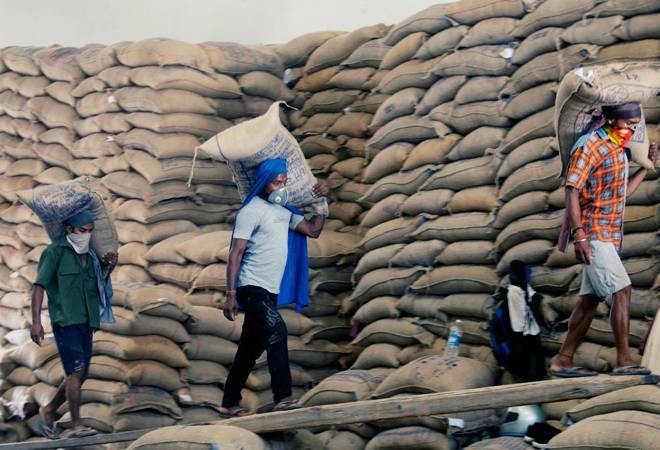New Delhi: The Confederation of Indian Industry (CII) has suggested the government to provide more relaxations in the country’s major economic districts during the extended lockdown period starting May 4.
In a report titled “A Strategy Note on Resumption of Economic Activities in Industrial Areas”, the industry chamber said that the cost of prioritising actions in such districts would be much smaller in comparison with the economic loss if these businesses have to remain shut.
It noted that while the country fights the pandemic at a pan-India level with gradual relaxation for economic activities, there is a need to prioritise actions in the districts which have heavy industrial/economic activities. By doing so, the damage to the economy would be contained to a great extent, the CII said.
“The CII therefore suggests that the top economic districts in the country have an additional relaxation in order to permit industrial clusters and standalone industrial facilities, including those not designated as ‘industrial estates’, SEZs or ‘industrial townships’, to operate,” the strategy note said.
This relaxation should be accompanied by aggressive measures to graduate districts from ‘red’ to ‘orange’ to ‘green’.
The CII also called for economic contribution of districts to be taken into consideration while classifying lockdown zones.
The report submitted to the government further said that districts with high economic activity should resume all industrial and business operations, including in containment zones with highest safety protocols.
“The third phase of the nationwide lockdown necessitates a focused strategy to minimize economic contraction due to COVID-19, without compromising on efforts to control the contagion. Prioritizing districts with heavy presence of economic and industrial activities with continued operations accompanied by strictest precautions can help enterprises to remain financially sustainable while averting job losses,” said Chandrajit Banerjee, Director General, CII.
According to the CII, while the protracted lockdown in the country, necessitated by the spread of COVID-19, has helped in controlling the spread of the deadly virus and given us time to augment medical capacity, it has also caused enormous stress to the financial sustainability of many businesses.
It requested the government that the top districts should be identified based on variables like their contribution to the country’s GDP, or presence of industrial estates and clusters, or registration of enterprises in a district.
Instead of the current practice of classifying the entire district as a red zone, the CII suggested the need for classifying zones as ‘containment’, ‘orange’ and ‘green’ within an industrial district.
Economic activities, in varying degrees of relaxation, should be permitted in all areas of these districts but health and safety protocols would differ from zone to zone, according to the industry body.
“The containment zone may be a street, mohalla or factory building where positive cases have been detected,” the CII said and suggested that close surrounding areas can be classified as orange zones where industrial activity can be continued with strict precautionary measures and monitoring.
In the containment zones, industrial units where no corona positive cases exist, can be allowed to operate if workers can be restricted to the premises or within walkable distance, as per the CII report.
Raw material and finished goods should be disinfected and kept separately for 72 hours before use, subject to approval by health authorities.
Maximum precautions and safety measures in the form of masks, repeated sanitation, restricted movement of people and vehicles, and group testing, among others, can be carried out regularly in such containment zones, as per the report.
“Aggressive measures are required to ensure that an industrial district moves from red to orange and green category within 21 days. The cost of undertaking precautionary measures by way of repeated sanitation, wearing of PPE, masks, monitoring, group testing etc will be much less than the economic loss if businesses in such high-performing districts have to remain shut for longer duration,” Banerjee said.
The government notification of May 1 has permitted industrial estates, SEZs and industrial townships with restricted entry within urban areas of red zones to commence operations.
The CII submitted that all industrial units, including in non-notified industrial areas and standalone units, be allowed to function in urban areas. These should include non-essential goods and services as well, it added.
It has also called for limited public transport to function to enable workers and self-employed people to reach the industrial areas.
Green zones, within an industrial district, on the other hand, should be allowed to work with relaxed restrictions but following strictly the health and safety protocols prescribed by the health authorities.
There should be real-time availability of data on all types of zones within the industrial districts. The authorities may also provide updated information on the Aarogya Setu app, other apps, local newspapers, radio, TV and online channels, it said.
The CII strategy note prescribes standard operating procedures for offices, workplaces, factories and establishments prior to resuming operations, after resuming operations, and guidelines for social distancing and visitor management.
It suggests sanitization as pest control of premises and also recommends a rotation roster for employees.
